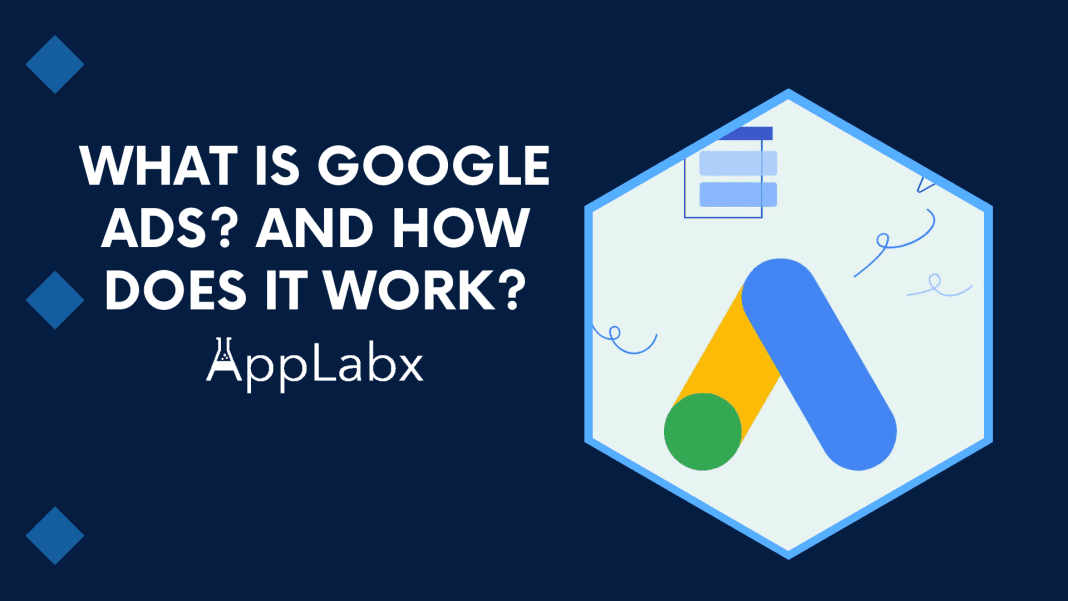Key Takeaways
- Google Ads Unveiled: Dive into the intricacies of the world’s premier online advertising platform. Understand the fundamentals and discover how Google Ads empowers businesses to reach their target audience effectively.
- Strategic Campaign Lifecycle: Master the art of crafting and optimizing Google Ads campaigns. From setup to advanced strategies, learn how to navigate the campaign lifecycle strategically, ensuring maximum visibility and engagement.
- Future-Ready Advertising: Anticipate and leverage upcoming trends in Google Ads.
Stay ahead in the digital arena by embracing AI, interactive ad formats, and privacy-centric practices. Explore key takeaways that will empower your advertising efforts for sustained success.
In the dynamic realm of digital marketing, Google Ads stands as a linchpin, orchestrating a symphony of online advertising initiatives.
As businesses navigate the intricate web of virtual landscapes to establish their online presence, understanding the intricacies of Google Ads becomes paramount.
This comprehensive guide aims to demystify the realm of Google Ads, unraveling its significance, mechanics, and the nuanced artistry that underpins its functionality.

The Evolution of Online Advertising
To comprehend the profound impact of Google Ads, one must first trace the evolutionary trajectory of online advertising.
From the rudimentary banner ads of the early internet to the sophisticated, targeted campaigns of today, the landscape has metamorphosed.
Google Ads emerges as a pivotal player, not merely as a platform but as a catalyst for businesses seeking visibility in the ever-expanding digital cosmos.
Defining Google Ads and Its Purpose
Google Ads, formerly known as Google AdWords, is not merely an advertising platform; it is a dynamic ecosystem where businesses engage in a virtual marketplace to showcase their products or services.
At its core, Google Ads is a pay-per-click (PPC) advertising system, allowing businesses to bid on keywords relevant to their offerings, strategically positioning themselves at the forefront of search engine results pages (SERPs).
The overarching purpose? Empowering businesses, large and small, to amplify their digital footprint and connect with a global audience.
Navigating the Jargon: Key Components and Terminology
Before embarking on the expedition into the mechanics of Google Ads, acclimating oneself to the lexicon of this digital realm is imperative.
From Quality Score to Ad Rank, CPC (Cost-per-click) to CPM (Cost-per-impression), the landscape is dotted with terminologies that wield significant influence over the success of an advertising campaign.
This guide will serve as a lexicon decoder, unravelling the nuances of Google Ads terminology and elucidating their impact on campaign performance.
As we delve into the intricacies of Google Ads, the journey promises to unveil the core mechanics that propel businesses to the zenith of online visibility.
Join us on this expedition into the heart of digital advertising, where algorithms meet creativity, and where businesses orchestrate their online narratives through the powerful symphony that is Google Ads.
But, before we venture further, we like to share who we are and what we do.
About AppLabx
From developing a solid marketing plan to creating compelling content, optimizing for search engines, leveraging social media, and utilizing paid advertising, AppLabx offers a comprehensive suite of digital marketing services designed to drive growth and profitability for your business.
AppLabx is well known for helping companies and startups use Google Ads to drive web traffic to their websites and web apps.
At AppLabx, we understand that no two businesses are alike. That’s why we take a personalized approach to every project, working closely with our clients to understand their unique needs and goals, and developing customized strategies to help them achieve success.
If you need a digital consultation, then send in an inquiry here.
What is Google Ads? And How Does it Work?
- Understanding Google Ads
- How Google Ads Works
- Setting Up a Google Ads Campaign
- Ad Creation and Optimization
- Monitoring and Analytics
- Advanced Google Ads Strategies
- Future Trends in Google Ads
1. Understanding Google Ads
In the vast expanse of digital marketing, Google Ads reigns supreme, serving as the cornerstone for businesses aiming to carve a niche in the competitive online landscape.
This section is dedicated to unraveling the essence of Google Ads, from its definition to a deep dive into its historical evolution and the critical components that make it a powerhouse in the realm of online advertising.
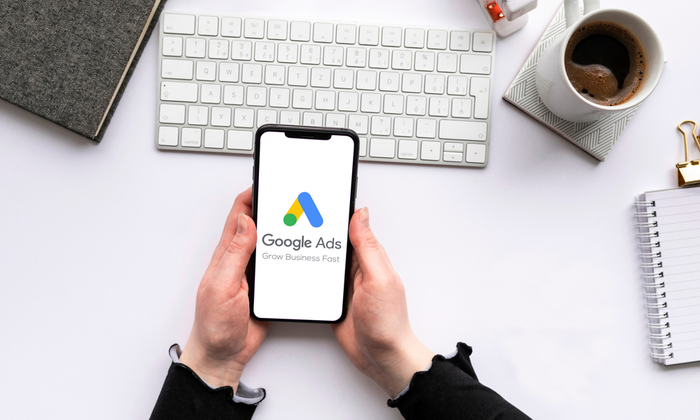
Definition and Purpose of Google Ads
Google Ads, formerly known as Google AdWords, is a pay-per-click (PPC) advertising platform developed by Google.
It allows businesses to create and display ads, targeting users who actively search for specific keywords on the Google Search engine or browse websites within the Google Display Network.
The primary purpose is clear – to provide businesses with a potent tool for reaching potential customers precisely when they are expressing intent related to the products or services offered.
Evolution and Historical Context
Historical Milestones
Launched in 2000, Google AdWords underwent a transformative rebranding in 2018, becoming Google Ads.
Over the years, the platform has evolved from a simple keyword-based advertising system to a multifaceted ecosystem, accommodating various ad formats and targeting options.
Key Components and Terminology
Ad Rank and Quality Score
- Ad Rank is the position of an ad on the search engine results page, determined by factors like bid amount and Quality Score.
- Quality Score, on a scale of 1 to 10, assesses the relevance and quality of ads. Higher Quality Scores lead to better ad positions at lower costs.
Cost-per-Click (CPC) vs. Cost-per-Impression (CPM)
- CPC charges advertisers when a user clicks on their ad.
- CPM charges advertisers per thousand impressions, making it suitable for brand visibility campaigns.
Example: A business bidding on the keyword “digital marketing services” with a high Quality Score might secure a higher Ad Rank and appear above competitors, even if they bid lower.
2. How Google Ads Works
Unlocking the mysteries of how Google Ads operates is essential for businesses seeking to harness the full potential of this powerful advertising platform.
This section delves into the intricate workings of Google Ads, from the auction system that determines ad placements to the various ad formats and targeting options available.

Ad Formats and Targeting Options
Text Ads, Display Ads, and Video Ads
- Text Ads: Simple, text-based ads that appear on the SERP.
- Display Ads: Visually engaging ads that appear on websites within the Google Display Network.
- Video Ads: Captivating video content displayed on YouTube and across the web.
Audience Targeting and Demographics
- Audience targeting allows advertisers to tailor their ads to specific demographics, interests, and behaviours.
- Demographic targeting enables advertisers to reach audiences based on factors like age, gender, and income.
Understanding the diverse ad formats and targeting options empowers advertisers to tailor their campaigns to specific audiences, enhancing the efficiency and relevance of their advertisements.
Setting Up a Google Ads Campaign
Creating a Google Ads Account
The first step involves setting up a Google Ads account, linking it to an existing Google account, or creating a new one.

Defining Campaign Goals and Objectives
- Campaign goals could range from driving website traffic to increasing brand awareness or generating leads.
- Objectives should align with broader business goals, ensuring a cohesive digital marketing strategy.
Selecting Keywords and Building Ad Groups
- Keywords are the foundation of Google Ads. Advertisers choose relevant keywords to trigger their ads.
- Ad groups organize ads and keywords into thematic groups, streamlining campaign management.
Setting Budgets and Bid Strategies
- Advertisers allocate daily or campaign budgets, controlling their overall ad spend.
- Bid strategies determine how bids are optimized based on goals, such as maximizing clicks or conversions.
Example: A travel agency setting up a campaign to promote vacation packages might choose keywords like “all-inclusive resorts” and “holiday deals” within ad groups dedicated to specific destinations.
3. Setting Up a Google Ads Campaign
Establishing a successful Google Ads campaign requires a strategic approach, meticulous planning, and a keen understanding of your business objectives.
This section navigates through the essential steps involved in setting up a Google Ads campaign, covering everything from creating an account to defining goals, selecting keywords, building ad groups, and optimizing budgets.

Creating a Google Ads Account
Process Overview
- Begin by visiting the Google Ads website, where you can sign in with your existing Google account or create a new one.
- Once logged in, follow the prompts to set up your first Google Ads campaign.
Defining Campaign Goals and Objectives
Types of Campaign Goals
- Website Traffic: Directing users to your website to explore products or services.
- Brand Awareness: Increasing visibility and recognition of your brand.
- Lead Generation: Collecting user information for future engagement.
- Sales: Driving direct conversions and purchases.
Aligning Objectives with Business Goals
- Ensure that your chosen campaign goals directly contribute to broader business objectives.
- Regularly reassess goals to adapt to evolving business needs.
Example: If your business aims to increase online sales, setting up a campaign with the goal of driving sales conversions would be the most aligned strategy.
Selecting Keywords and Building Ad Groups
Keyword Research
- Conduct thorough research to identify relevant keywords related to your products or services.
- Leverage tools like Google Keyword Planner to discover keyword ideas and estimate search volumes.
Organizing Ad Groups
- Group related keywords together in ad groups to create targeted and cohesive campaigns.
- This facilitates better control over ad relevance and enhances the overall Quality Score.
Example: For a fitness equipment retailer, ad groups could be structured around categories such as “treadmills,” “dumbbells,” and “yoga mats,” each containing relevant keywords.
Setting Budgets and Bid Strategies
Allocating Budgets
- Decide on a daily or campaign budget that aligns with your financial constraints and advertising goals.
- Regularly monitor and adjust budgets based on campaign performance.
Bid Strategies
- Choose a bid strategy that aligns with your campaign objectives, whether it’s maximizing clicks, conversions, or maintaining a target cost-per-acquisition (CPA).
- The average click-through rate in Google Ads across all industries is 3.17% for search and 0.46% for display.
Example: A new startup with a limited budget may opt for a manual CPC (cost-per-click) bid strategy to have more control over individual keyword bids.
Creating Compelling Ad Copy
Crafting Effective Ad Copy
- Write clear, concise, and compelling ad copy that communicates value propositions.
- Include keywords naturally and highlight unique selling points.
Designing Visual Elements
- For display and video ads, pay attention to visual elements such as images, logos, and color schemes.
- Ensure visual consistency with your brand identity.
Example: An e-commerce brand promoting a flash sale on athletic shoes might include phrases like “Limited-time Offer” and “Shop Now” in their ad copy, paired with engaging visuals of the featured products.
A/B Testing and Performance Analysis
Implementing A/B Testing
- Experiment with different ad variations to identify the most effective elements.
- Test headlines, ad copy, visuals, and calls-to-action to optimize performance.
A/B testing can lead to an average conversion rate improvement of 49%.
Continuous Performance Analysis
- Regularly monitor key performance indicators (KPIs) such as CTR, conversion rate, and return on ad spend (ROAS).
- Use Google Analytics to gain deeper insights into user behaviour and campaign effectiveness.
4. Ad Creation and Optimization
Crafting compelling and visually engaging ads is a pivotal aspect of Google Ads’ success. This section delves into the intricacies of ad creation, covering everything from writing impactful ad copy to designing effective visual elements.
Additionally, we’ll explore the importance of A/B testing and ongoing optimization strategies to ensure your ads continuously evolve for optimal performance.

Crafting Compelling Ad Copy
Clarity and Conciseness
Keep ad copy clear and concise, delivering the message succinctly.
Incorporating Keywords
- Integrate relevant keywords seamlessly into your ad copy to enhance relevance.
- Avoid keyword stuffing; maintain a natural and engaging tone.
Example: For a fitness apparel brand targeting the keyword “high-performance activewear,” ad copy might include phrases like “Elevate Your Workout with High-Performance Activewear” to align with user intent.
Designing Visual Elements
Visual Consistency with Branding
- Ensure that visual elements, such as images and logos, align with your brand identity.
- Consistent branding fosters recognition and trust among users.
Ad Formats and Creative Elements
- Tailor visuals to the chosen ad format (text, display, video).
- Utilize high-quality images, vibrant colors, and compelling visuals to capture attention.
Example: An online travel agency could use vivid imagery of exotic destinations in their display ads, creating a visual allure that resonates with users seeking travel inspiration.
A/B Testing for Continuous Improvement
Benefits of A/B Testing
- Experiment with different ad variations to identify elements that resonate with your audience.
- Test headlines, ad copy, visuals, calls-to-action, and even different ad formats.
Setting Up A/B Tests
- Divide your audience into segments and show different ad variations to each.
- Monitor key metrics to determine the most effective elements.
Example: An e-commerce business testing two variations of a call-to-action button in their text ads might discover that a red “Shop Now” button outperforms a green “Explore Deals” button in terms of click-through rates.
Performance Analysis and Optimization Strategies
Key Performance Indicators (KPIs)
- Monitor essential KPIs like Click-Through Rate (CTR), Conversion Rate, and Return on Ad Spend (ROAS).
- Leverage Google Analytics for a comprehensive view of user behavior.
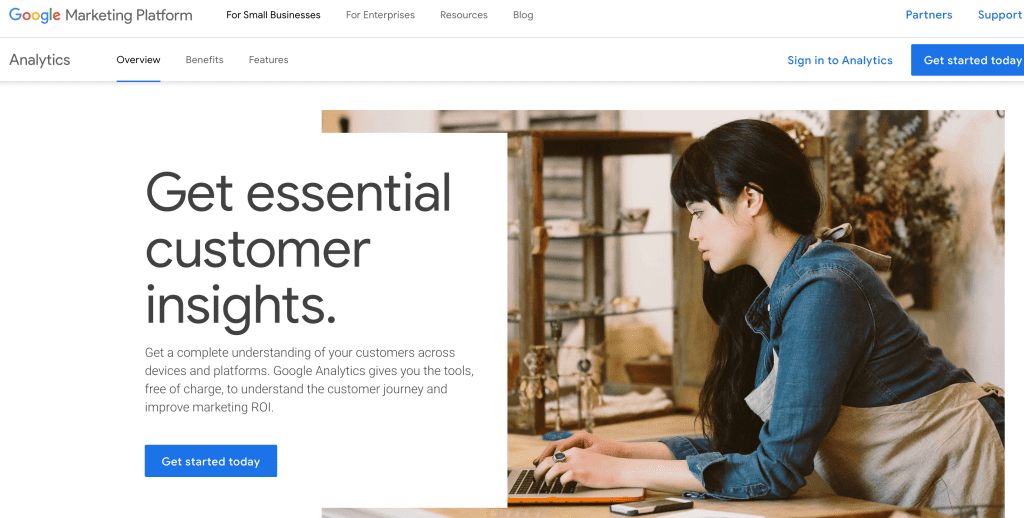
Continuous Keyword Analysis
- Regularly review and update your chosen keywords based on performance.
- Utilize Google’s Keyword Planner to discover new keyword opportunities.
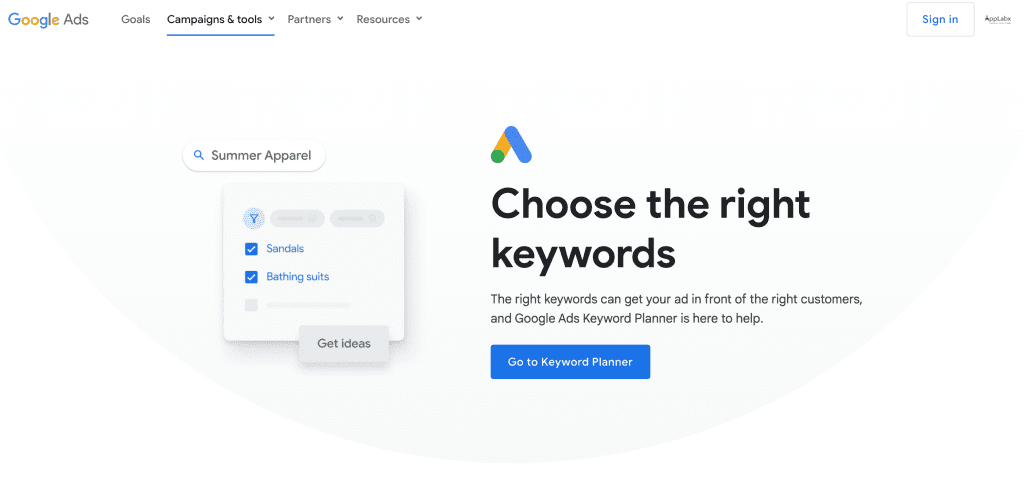
Budget Allocation and Bid Adjustments
- Adjust budgets based on campaign performance and allocate more resources to high-performing keywords.
- Utilize bid adjustments for specific demographics, devices, or locations.
Example: A local restaurant running a Google Ads campaign might analyze performance data to discover that mobile users within a 5-mile radius have a higher conversion rate, prompting them to increase bids for this segment.
5. Monitoring and Analytics
Effectively monitoring and analyzing the performance of your Google Ads campaigns is crucial for optimizing strategies, maximizing ROI, and ensuring sustained success.
This section explores the key aspects of monitoring and analytics, emphasizing the use of the Google Ads dashboard, tracking essential KPIs, and integrating Google Analytics for a comprehensive view of user behavior.

Google Ads Dashboard Overview
Navigating the Dashboard
- Familiarize yourself with the Google Ads dashboard, your central hub for campaign management and performance tracking.
- Key sections include Campaigns, Ad Groups, Ads, and Keywords.
Tracking Key Performance Indicators (KPIs)
Click-Through Rate (CTR)
- CTR is a vital metric indicating the percentage of users who clicked on your ad after seeing it.
- A high CTR generally reflects ad relevance and effectiveness.
Conversion Rate
- The conversion rate measures the percentage of users who completed a desired action, such as making a purchase or filling out a form.
- A rising conversion rate signifies effective ad targeting and compelling content.
Return on Ad Spend (ROAS)
- ROAS measures the revenue generated for every dollar spent on advertising.
- A ROAS of 4:1 indicates that for every $1 spent on ads, $4 in revenue is generated.
Using Google Analytics with Google Ads
Integration Benefits
- Linking Google Analytics with Google Ads provides a more comprehensive view of user behavior beyond ad interactions.
- Analyze website traffic, user demographics, and on-site actions.
Behavioral Insights
- Explore user pathways, uncovering how users navigate through your website after clicking on an ad.
- Identify high-performing pages and potential areas for improvement.
Common Challenges and Solutions in Monitoring
Budget Management and Optimization
- Set realistic budgets aligned with campaign objectives and continuously monitor spending.
- Utilize Google’s Budget Planner tool to estimate monthly costs and adjust accordingly.
Ad Visibility and Click-Through Rates (CTR)
- Monitor ad positions and adjust bids to maintain competitive visibility.
- Regularly update ad copy, utilizing A/B testing to enhance CTR.
Ad Fraud and Invalid Clicks
- Implement click fraud detection tools to identify and prevent fraudulent activities.
- Utilize Google’s ClickCease integration to mitigate the impact of invalid clicks.
Example: An e-commerce store experiencing a sudden surge in clicks but no corresponding increase in sales might discover click fraud through monitoring and implementing preventive measures to safeguard their ad spend.
6. Advanced Google Ads Strategies
In the intricate realm of digital advertising, mastering advanced Google Ads strategies becomes a linchpin for businesses striving to not just participate but excel in the highly competitive landscape.
This comprehensive section explores sophisticated approaches, strategic insights, and data-backed statistics to guide advertisers toward a more nuanced and effective Google Ads campaign.
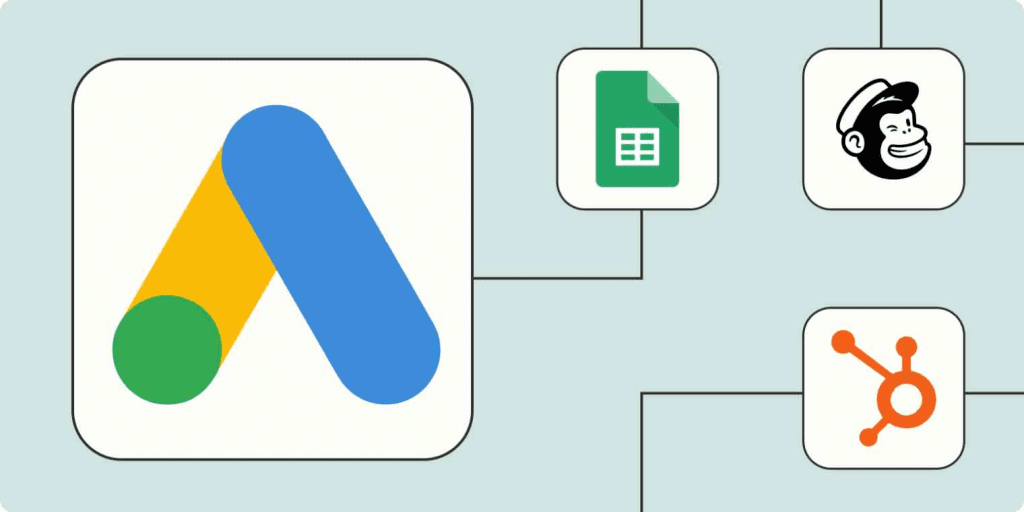
Dynamic Remarketing for Personalized Engagement
Dynamic Remarketing Overview
- Definition: Dynamic remarketing involves displaying personalized ads to users based on their previous interactions with a website.
- Implementation: Utilizes user behavior data to dynamically generate and showcase relevant products or services.
Benefits of Dynamic Remarketing
- Increased Relevance: Tailoring ads to user preferences enhances relevance and engagement.
- Higher Conversion Rates: Personalized recommendations can lead to higher conversion rates.
Example: An e-commerce store implementing dynamic remarketing might display an ad featuring the exact product a user viewed, along with similar or complementary items, increasing the likelihood of a conversion.
Geo-Targeting Strategies for Localized Impact
Localized Ad Campaigns
- Targeting Specific Regions: Tailor ad content to resonate with users in specific geographical areas.
- Utilizing Location Extensions: Include physical addresses and contact information in ads.
Benefits of Geo-Targeting
- Enhanced Relevance: Geo-targeted ads align with local user intent.
- Cost Efficiency: Focusing on high-conversion areas optimizes ad spend.
Example: A brick-and-mortar store running Google Ads might use geo-targeting to promote in-store events, limited-time offers, or specific products to users in the vicinity.
Optimizing Ad Scheduling for Peak Performance
Ad Scheduling Essentials
- Identifying Peak Hours: Analyze Google Analytics data to determine when users are most active.
- Strategic Ad Placement: Schedule ads to appear during high-conversion periods for maximum impact.
Benefits of Ad Scheduling
- Cost Optimization: Allocate the budget to times when user engagement is highest.
- Increased Visibility: Ensure ads are prominent during peak user activity.
Example: A restaurant leveraging Google Ads might schedule ads to appear during lunch and dinner hours, aligning with times when potential customers are actively searching for dining options.
Harnessing the Power of Ad Extensions for Expanded Visibility
Various Ad Extensions
- Sitelink Extensions: Additional links directing users to specific pages.
- Callout Extensions: Additional text highlighting key selling points.
- Structured Snippet Extensions: Showcasing specific aspects or features.
Benefits of Ad Extensions
- Expanded Ad Real Estate: Ad extensions provide additional space to convey information.
- Enhanced Visibility: More information encourages user engagement.
Example: An e-commerce brand could use site link extensions to direct users to specific product categories, promoting “New Arrivals,” “Best Sellers,” and “Sale Items.”
Advanced Audience Segmentation Strategies
Behavioral Segmentation
- Segmenting Based on Online Behaviors: Create audience segments based on pages visited, time spent, or interactions.
- Tailoring Ads to Segments: Craft personalized messages for each behavioral segment.
Demographic Targeting
- Utilizing Demographic Data: Leverage age, gender, and income data for refined targeting.
- Customizing Messages: Craft messages that resonate with specific demographic groups.
Example: A travel agency could target different age groups with specific travel packages, promoting adventure tours for younger audiences and luxury getaways for an older demographic.
Incorporating Video Ads for Enhanced Engagement
Video Ad Formats
- In-Stream Ads: Played before, during, or after YouTube videos.
- Discovery Ads: Displayed alongside other YouTube videos or search results.
- Bumper Ads: Short, non-skippable ads of up to six seconds.
Benefits of Video Ads
- Captivating Visuals: Video ads leverage engaging visuals and storytelling.
- Brand Awareness: Ideal for creating brand awareness and conveying complex messages.
YouTube reaches more 18- to 49-year-olds in an average week than all cable TV networks combined.
Example: An apparel brand might utilize in-stream video ads to showcase a new clothing line, conveying style, quality, and lifestyle through a visual narrative.
Integration of Artificial Intelligence (AI) and Machine Learning
Automated Bid Strategies
- Smart Bidding Strategies: Implement Target CPA (Cost-per-Acquisition) and Maximize Conversions.
- Real-Time Bid Adjustments: Allow machine learning algorithms to adjust bids based on historical performance.
Ad Copy Optimization with AI
- Analyzing and Optimizing Ad Copy: AI-driven tools can analyze and optimize ad copy for better performance.
- Identifying High-Performing Keywords: Machine learning algorithms identify keywords and creatives that drive results.
Smart Bidding sees an average of 20% more conversions at a similar cost per action.
Example: A tech company employing AI-driven bidding might experience improved cost efficiency, with the algorithm adjusting bids in real time based on the likelihood of conversion.
Advanced Tracking and Attribution Models
Conversion Attribution Models
- First-Click Attribution: Credits the first interaction with a user.
- Last-Click Attribution: Attributes the conversion to the last interaction.
- Linear Attribution: Distributes credit evenly across all interactions.
Multi-Touchpoint Analysis
- Analyzing the Entire Customer Journey: Examine the customer journey from the first click to conversion.
- Identifying Crucial Touchpoints: Recognize touchpoints that significantly contribute to the conversion path.
Example: An e-commerce business might discover that while the last click was a branded search ad, the initial interaction through a display ad played a crucial role in the customer’s decision-making process.
Strategic Use of Negative Keywords for Precision Targeting
Negative Keywords Defined
- Definition: Negative keywords are terms that prevent ads from showing when specified words or phrases are included in a user’s search query.
- Refining Ad Targeting: Helps eliminate irrelevant clicks and ensures ads are shown to the most relevant audience.
Benefits of Negative Keywords
- Cost Savings: Prevents ad spend on irrelevant searches.
- Improved Relevance: Refines targeting, leading to more qualified clicks.
Example: A software company might use negative keywords to exclude searches related to “free trials” if they offer only premium, paid software, ensuring their budget is spent on users likely to convert.
Continuous A/B Testing for Iterative Improvement
A/B Testing Methodology
- Testing Variations: Experiment with different ad variations to identify the most effective elements.
- Parameters to Test: Test headlines, ad copy, visuals, calls-to-action, and even different ad formats.
Benefits of A/B Testing
- Performance Optimization: Allows for continual refinement of ads for improved performance.
- User-Centric Approach: Ensures ads resonate with the preferences of the target audience.
7. Future Trends in Google Ads
As the digital advertising landscape continues to evolve, staying ahead of emerging trends in Google Ads is crucial for businesses seeking to maximize their online presence and drive meaningful engagement.
This comprehensive section explores future trends, incorporating relevant examples, data-driven insights, and statistics from verified sources to provide a strategic outlook for advertisers.

The Rise of Artificial Intelligence (AI) and Machine Learning
Automation in Ad Campaigns
- Automated Bidding Strategies: AI-driven algorithms adjust bids in real time based on historical data.
- Ad Copy Optimization: Machine learning tools analyze performance data to optimize ad copy.
Benefits of AI in Google Ads
- Enhanced Efficiency: Automation streamlines campaign management tasks.
- Improved Performance: AI-driven bid adjustments can improve conversion rates and cost efficiency.
Example: A retail brand leveraging AI-driven bid strategies might experience improved cost efficiency, with the algorithm dynamically adjusting bids based on real-time performance data.
Interactive and Immersive Ad Formats
Emergence of Interactive Ads
- Playable Ads: Users engage with interactive elements before clicking through.
- AR and VR Ads: Augmented and virtual reality technologies create immersive ad experiences.
Benefits of Interactive Ads
- Increased Engagement: Interactive elements capture user attention.
- Enhanced User Experience: Immersive formats provide a memorable brand experience.
Example: An automotive brand might use AR technology to allow users to virtually “test drive” a new model, creating an engaging and memorable ad experience.
Shoppable and Direct-response Ads
Shoppable Ads Overview
- Integration with E-commerce Platforms: Users can shop directly within the ad.
- Direct Response CTAs: Encourage immediate actions, such as making a purchase or filling out a form.
Benefits of Shoppable Ads
- Seamless Conversion Path: Reduces friction in the user journey.
- Increased Conversions: Users can make purchase decisions without leaving the ad.
The revenue in the e-commerce market in the United States was forecast to continuously increase between 2023 and 2028 by in total of 614.2 billion U.S. dollars.
Example: A fashion brand might utilize shoppable ads on social media platforms, allowing users to browse and purchase products without leaving the platform.
Voice Search Optimization for Ads
Integration of Voice-Activated Ads
- Voice Search-Friendly Ad Copy: Adapt ad copy to align with natural language queries.
- Voice-Activated Calls to Action: Encourage users to engage verbally with the ad.
Benefits of Voice-Optimized Ads
- Improved Accessibility: Aligns with the growing trend of voice search usage.
- Enhanced User Experience: Provides a more natural interaction with ads.
According to Statista, forecasts suggest that by 2024, the number of digital voice assistants will reach 8.4 billion units.
Example: A travel agency might optimize its ad copy to respond effectively to voice queries like “Find me the best vacation deals.”
Cross-Platform Advertising Integration
Seamless Multi-Platform Campaigns
- Integration Across Devices: Ensure a cohesive user experience across desktop, mobile, and other devices.
- Consistent Messaging: Maintain brand consistency across various platforms and channels.
Benefits of Cross-Platform Integration
- Broader Reach: Connect with users on their preferred platforms.
- Unified Brand Presence: Reinforce brand identity through consistent messaging.
Example: An online streaming service might run a cross-platform campaign, ensuring that users encounter consistent messaging whether they interact with the ad on their smartphone, smart TV, or desktop.
Privacy-Centric Advertising Practices
Adaptation to Privacy Changes
- Cookie-Free Targeting: Shift towards alternative methods for user targeting.
- Enhanced Data Transparency: Communicate openly about data collection and usage.
Benefits of Privacy-Centric Practices
- Building Trust: Transparent practices foster trust among users.
- Compliance with Regulations: Align with evolving data protection regulations.
Example: An e-commerce platform might implement contextual targeting and communicate transparently about how user data is handled to comply with privacy regulations.
Ephemeral Content and Story Ads
Ephemeral Content Dynamics
- Story Ads: Temporary content that disappears after a set period.
- User-Generated Content: Encourage users to create and share ephemeral content.
Benefits of Ephemeral Content
- FOMO (Fear of Missing Out): Limited-time content creates a sense of urgency.
- Engagement Boost: Interactive features in story ads increase engagement.
Example: An event organizer might use ephemeral content to promote limited-time discounts or exclusive behind-the-scenes glimpses to generate excitement among users.
Conclusion
In the ever-evolving realm of digital marketing, understanding “What is Google Ads?” and comprehending its intricate workings is akin to holding the keys to a powerful and dynamic advertising kingdom.
Throughout this comprehensive exploration, we’ve delved into the fundamentals, intricacies, and advanced strategies that underpin the success of Google Ads campaigns.
Now, as we draw this journey to a close, let’s encapsulate the essence of Google Ads and its transformative impact on digital advertising.
Unveiling the Power of Google Ads
Google Ads, formerly known as Google AdWords, stands as the undisputed titan of online advertising.
From search ads to display ads, Google Ads offers a versatile suite of advertising options, allowing advertisers to craft tailored campaigns that align with their objectives and resonate with their audience.
Decoding the Mechanism: How Google Ads Works
At its core, Google Ads operates on a pay-per-click (PPC) model, where advertisers bid for ad placement in the coveted Google search results and other partner sites.
The intricate auction system, coupled with a meticulous ad ranking algorithm, ensures that the most relevant and high-quality ads surface for users.
Understanding the auction dynamics, keyword targeting, and ad relevance is pivotal for advertisers seeking optimal visibility and engagement.
Navigating the Campaign Lifecycle: A Strategic Approach
Embarking on a Google Ads journey necessitates a strategic and well-thought-out approach.
From campaign setup to ad creation, optimization, and continuous monitoring, each phase plays a crucial role in determining the success of your advertising endeavors.
Leveraging advanced strategies such as dynamic remarketing, audience segmentation, and AI integration further elevates campaigns, ensuring they not only capture attention but also drive conversions.
Advanced Strategies: Paving the Path to Excellence
As we explored advanced strategies, the landscape expanded to encompass dynamic remarketing for personalized engagement, geo-targeting for localized impact, and the integration of artificial intelligence and machine learning for automated bid strategies and ad copy optimization.
Shoppable ads, video engagement, and cross-platform integration emerged as pillars of a forward-looking advertising strategy, poised to meet the evolving demands and preferences of the digital audience.
Anticipating Tomorrow: Future Trends in Google Ads
Peering into the future, the landscape of Google Ads is set to witness a myriad of transformative trends.
Artificial intelligence and machine learning will continue to redefine automation, interactive and immersive ad formats will captivate audiences, and the integration of voice search and shoppable ads will reshape user interactions.
As privacy-centric practices and cross-platform integration take center stage, advertisers must adapt and innovate to remain at the forefront of the digital advertising arena.
Conclusion: A Call to Mastery and Innovation
In conclusion, mastering Google Ads is not merely a pursuit; it’s an ongoing commitment to mastery and innovation.
The platform’s dynamism demands constant adaptation to emerging trends, a deep understanding of user behavior, and a commitment to delivering value through compelling and relevant ad experiences.
Whether you’re a seasoned advertiser or a newcomer to the world of digital marketing, the journey with Google Ads is one of perpetual exploration, optimization, and strategic evolution.
As we navigate the intricacies of Google Ads, let us embrace the transformative power it holds, turning clicks into conversions, impressions into brand resonance, and searches into meaningful engagements.
In the fast-paced and competitive digital landscape, the ability to harness the full potential of Google Ads is not just a skill—it’s a strategic imperative for businesses aiming not just to exist but to thrive in the online arena.
So, equip yourself with knowledge, implement advanced strategies, and stay attuned to the pulse of future trends as you chart your course toward excellence in the world of Google Ads. Happy advertising.
If you are looking for a top-class digital marketer, then book a free consultation slot here.
If you find this article useful, why not share it with your friends and business partners, and also leave a nice comment below?
We, at the AppLabx Research Team, strive to bring the latest and most meaningful data, guides, and statistics to your doorstep.
To get access to top-quality guides, click over to the AppLabx Blog.
People also ask
How does Google Ads work?
Google Ads operates on a pay-per-click (PPC) model, where advertisers bid on keywords to display ads in Google’s search results. Ad relevance, bid amount, and ad quality influence ad placement. Targeting options allow precise audience reach, and advertisers only pay when users click on their ads, making it cost-effective and measurable.
What is Google Ads for beginners?
Google Ads for Beginners is a powerful online advertising platform. It allows businesses to display ads on Google’s network, targeting users actively searching for products or services. With a user-friendly interface, beginners can set budgets, choose ad formats, and reach their audience effectively.
What is Google Ads and why do I have to pay for it?
Google Ads is an online advertising platform where businesses pay to display their ads on Google’s network. You pay when users interact with your ad, making it a cost-effective way to reach potential customers actively searching for products or services related to your business.


























